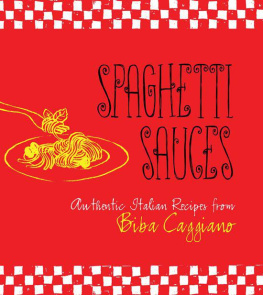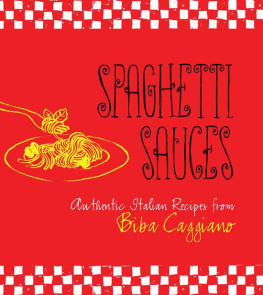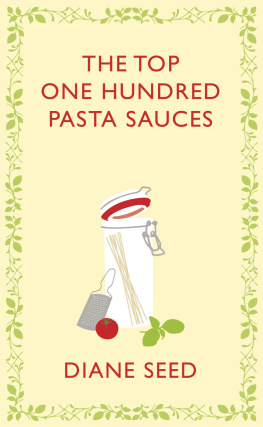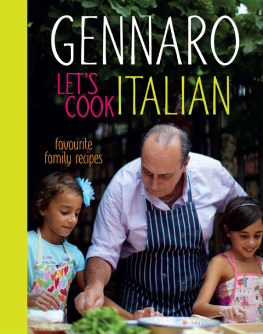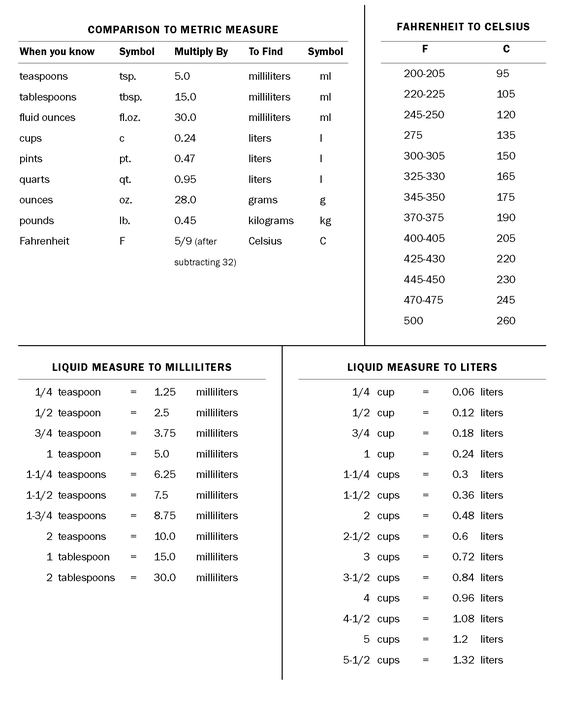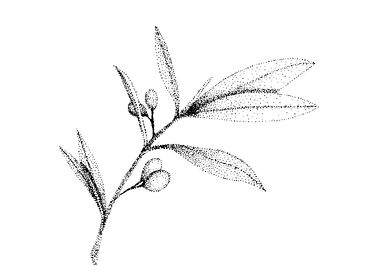About the Author
Biba Caggiano is the award-winning author of seven cookbooks, all of which are still in print. Her cookbooks have sold over 600,000 copies. She is the host of the syndicated cooking show Bibas Italian Kitchen on The Learning Channel. The show is seen in several countries, including Canada and Australia.
She has been the chef/owner of Biba restaurant in Sacramento, California, since 1986.The restaurant has been featured in Gourmet, Bon Apptit and Travel & Leisure. In 1998, the governor of California and the California Travel Industry selected Biba as the Northern California Chef of the Year.
Originally from the Emilia-Romagna region of Italy, she now lives in California.
HOLIDAY MENU FROM EMILIA-ROMAGNA
Prosciutto with melon
Green Tagliatelle with Tomato Sauce, page 50
Stuffed Veal Roast, page 155
Stuffed Artichokes, page 185
Baked Tomatoes, page 180
Buttered carrots
Oranges in liqueur
Sweet Fried Cream, page 230
Mature Barbaresco or Cabernet Sauvignon
FALL AND WINTER MENUS
Pan-Roasted Chicken, page 115
Peas with Prosciutto, page 184
Fresh fruit
Jam Tart, page 218
Vapolicella or Gamay Beaujolais
Hot Anchovy Dip, page 17
Basic Polenta, page 86, with Rabbit with Wine and Vegetables, page 117
Mixed Salad, page 196
Pears Poached in Red Wine, page 218
Barbera or Cabernet Sauvignon
SPRING AND SUMMER MENUS
Trenette with Pesto Sauce, page 74
Cold Veal in Tuna Sauce, page 154
Mixed Salad, page 196
Cold Zabaglione, page 229, with fresh strawberries
Trebbiano or Fum Blanc
Rice and Pea Soup, page 31
Calfs Liver in Onion Sauce, page 145
Asparagus Salad, page 195
Sweet Fried Cream, page 230, with fresh fruit
Merlot, Light Mendocino or Zinfandel
Strichetti with Garlic and Tomato Sauce, page 58
Veal Chops Milan Style, page 148
Mushrooms with Marsala Wine and Cream, page 178
Mixed Salad, page 196
Gattinara or Pinot Noir
Risotto with Asparagus Tips, page 100
Tomato Salad, page 192
Trout in Foil, page 104
Fried Fruit, page 226
Gavi dei Gavi or Chardonnay
Prosciutto with figs
Spaghetti with Spring Vegetables, page 63
Roast Rack of Lamb, page 130
Zucchini with Vinegar, page 177
Strawberry Mousse, page 220
Tignanello or Cabernet Sauvignon
METRIC CONVERSION CHARTS
Some Basic Ingredients
Because Italian cuisine is basically simple, each ingredient plays a very important role. Certain dishes cannot be made without a specific ingredient and still be considered authentic. While many ingredients are vital, I also realize that some are often unavailable in smaller towns. I urge you to go the extra mile to find an important ingredient and to substitute only if you must.
BASIL: Fresh basil is probably the most popular Italian herb. The only substitute is home-preserved basil. Basil leaves can be preserved between layers of coarse salt in tightly sealed jars. They lose some of their green color, but retain the favor. Basil can also be preserved in olive oil.
BROTH: Broth is an important ingredient in Italian cooking. Risotto, for example, cannot be made without it. Broth is also used in sauces, stews and braised meats. Make large batches and freeze it.
BUTTER: Butter is widely used in Northern Italy. It is preferred for cooking instead of olive. I prefer to use unsalted butter.
FONTINA CHEESE: Fontina is a delicious cheese from Piedmont. Its delicate flavor enhances many Italian dishes. Substitute with stronger-flavored Danish fontina only if absolutely necessary.
GARLIC: Garlic is widely used in Italian cooking, but it should not be abused. Many dishes that call for garlic need only a hint of it. Choose a large head of garlic with firm, unwrinkled cloves.
GORGONZOLA CHEESE: This blue-vein cheese comes from Lombardy. Gorgonzola is pungent with a creamy consistency. Substitute blue cheese, preferably Oregon Blue, only if absolutely necessary.
MARSALA WINE: The best Marsala wine comes from Marsala in Sicily. Dry and sweet types are available. Use dry Marsala for cooking. Its aromatic flavor is essential to many dishes. American Marsala wine is sweeter than the Italian and should be used with discretion. Substitute dry sherry if Marsala is unavailable.
MOZZARELLA CHEESE: One of Italys favorite cheeses, the best mozzarella is made from the curd of water-buffalo milk. It is generally stored in water and does not keep very long. It has a creamy and delicate taste. Substitute domestic mozzarella.
OIL FOR FRYING: For deep-frying use any light-flavored vegetable oil.
OLIVE OIL: In choosing an olive oil, look for a nice green color and a pleasing taste and fragrance. Some of the best Italian olive oils come from Tuscany, Umbria and Liguria. Extra-virgin olive oil, which is the product of the first pressing of the olives, is considered the best. Store olive oil in a tightly capped bottle in a cool, dark place. Use olive oil within a few months or it may turn rancid.
PANCETTA: Pancetta is the same cut of pork as bacon. It is cured with salt and is not smoked. It comes rolled up like a large salami. Widely used in Italian cooking, especially in Emilia-Romagna, it is vital to many dishes. If available, buy a large quantity, cut into several pieces and freeze it.You can substitute domestic bacon for pancetta, but it must be blanched in boiling water for two to three minutes to reduce the smoky flavor. Fresh side pork can also be used.
PARMESAN CHEESE: Italian cuisine would not be the same without this cheese. Parmesan is produced in an area between Parma and Reggio-Emilia. It is made under strict regulations. When buying Parmesan, look for Parmigiano Reggiano stamped on the crust. The cheese should be straw-yellow and crumbly and moist inside. It is expensive, but a little goes a long way. Buy a small piece and grate only what you need. Wrap the remaining cheese tightly in foil and store in the refrigerator. Domestic Parmesan is subject to different standards and not aged as long. If necessary, domestic Parmesan can be used. Do not use the grated Parmesan sold at the supermarket unless you have no other choice.
PARSLEY: If available, use the large, flat-leaf Italian parsley. Parsley is widely used in Italian cooking. It is a good source of vitamins A and C and also iron.
PROSCIUTTO: Prosciutto is uncooked, unsmoked ham. It is salted, air-cured and aged a minimum of one year. Italian prosciutto is usually much sweeter than the American counterpart. Prosciutto is widely used in Italian cooking and as an antipasto. Domestic prosciutto is an acceptable substitute.
RICE: Italian rice is short and thick-grained. It is perfect for risotto. Imported Italian rice such as arborio is available in Italian groceries and specialty stores. California short-grain pearl rice can be substituted for arborio.
RICOTTA CHEESE: Domestic ricotta is acceptable. It has a creamier consistency than Italian ricotta and is more watery. Never substitute cottage cheese for ricotta.
ROSEMARY: Rosemary is deliciously aromatic. It is excellent with roasts or in marinades. Dried rosemary is perfectly acceptable.
SAGE: Sage is at its best when used with poultry and game. Use dried sage sparingly because its strong flavor can be overwhelming.


